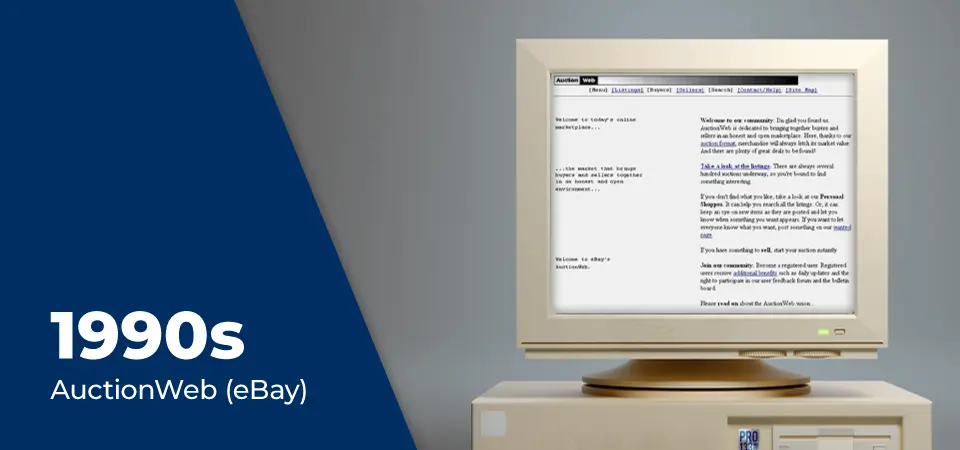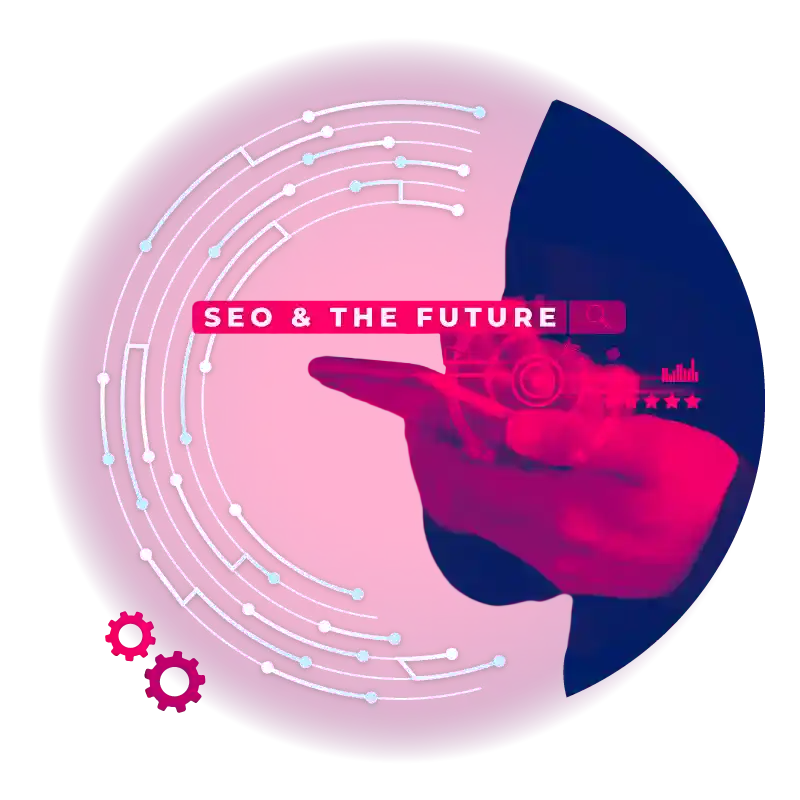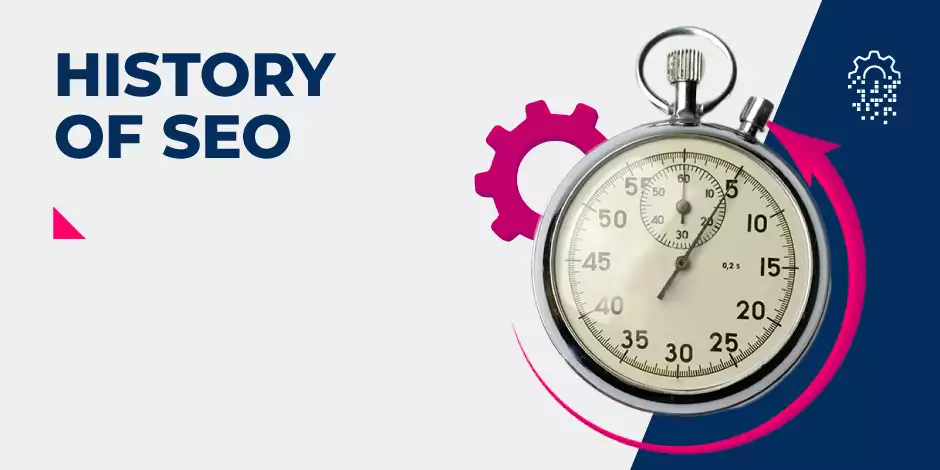
The History of SEO: From 1990 to Today
SEO is a crucial tool for any business trying to etch its name, brand, or product onto the web. Approximately 175 websites are created on the internet every minute (that’s three every second!)—chances are, by the time you finish this article, there will be over 1,000 more websites in existence than when you started… That’s a lot of content!
In the digital whitewash we know as the World Wide Web, it’s important to keep on top of the game to ensure good results. But how can you cut ahead of the competition?
Take it from an SEO agency: learning the history of SEO is a great start. It can give you a greater understanding of how tech giants like Google have become the names they are today, and help you predict what advances may arise in the future.
It’s a daunting, complex web to untangle: but don’t fear, we’ve sifted through the books to give you a quick and informative summary of SEO history. You can thank us later.
A Brief History of SEO

SEO started out much like the internet: underdeveloped, competitive, and… wild. In this article, we’ll travel through the decades to unravel the riveting history of search engine optimisation—from its humble beginnings to the nuanced and multifaceted industry it is today.
Pre-1990s: The Start of SEO History
Believe it or not, the first idea of the internet—or at least a global archive of information—was first conceived as far back as July 1945. At the time, Dr. Vannevar Bush, director of the Office of Scientific Research and Development, wrote a piece for The Atlantic proposing an idea that would later be known as ‘Google’.

The article wrote that he envisioned a “collection of data and observations, the extraction of parallel material from the existing record, and the final insertion of new material into the general body of the common record.”
Sounds familiar, right? Unfortunately, it took nearly half a century for Bush’s vision to become reality—in the 1990s, to be exact. On September 10th, 1990, Alan Emtage, a then-student at McGill University, launched Archie, arguably the world’s first search engine (although this is still debated by SEO fanatics today).
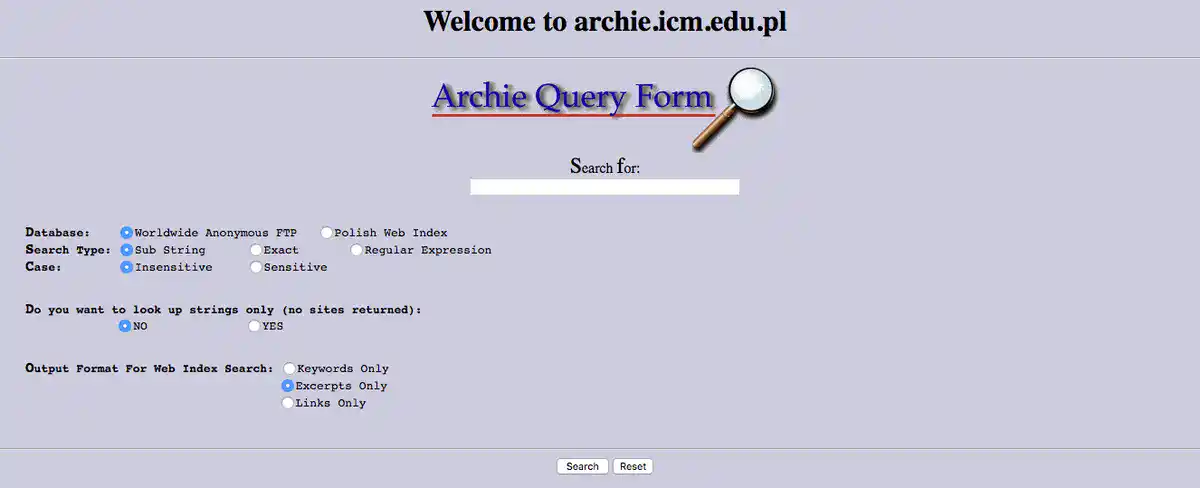
For the sake of simplicity, we’ll consider Archie as the pioneer of search engine technology. But how did it work?
In the stone age of the internet, the World Wide Web that we know today didn't exist. There was still an internet, albeit primitive, with files scattered across the network—with the primary method of storing and retrieving files being via File Transfer Protocol (FTP).
Coming from the word “archive”, Archie servers were programs that maintained databases of anonymous FTP host directors in which people could connect and download files.
The 1990s: The Search Engine Wild West
The next decade was pivotal for the development of search engines. Unlike today, where Google dominates the web, there were a number of both human-powered directories and crawler-based listings, for instance: AskJeeves, Excite, Infoseek, Lycos, AltaVista, and Yahoo!.
Despite the huge choice of search engines, SEO marketers at this time were still limited in options on how they could improve their website rankings, with the only way to optimise their site being through on-site action. This included:
- Making sure the content was good and relevant
- Making sure there was enough text
- Ensuring HTML tags were accurate
- Having internal links and outbound links

Notable SEO Moments in the 1990s
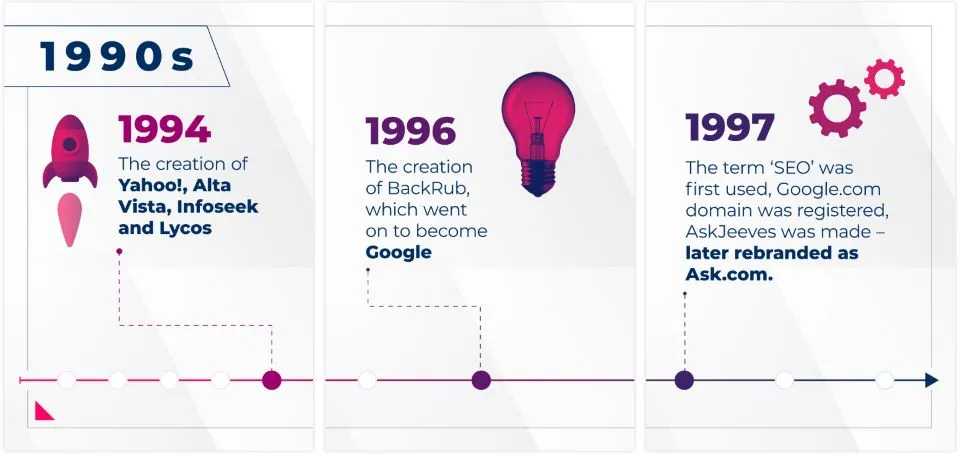
1994
In 1994, Jerry Wang and David Filo created Yahoo! during their studies at Stanford University. The site, which has gone on to become one of the most popular search engines, was originally an internet bookmark list.
This year also saw the fruition of other search engines, including Alta Vista, Infoseek, and Lycos.
1996
Two years later, two other Stanford University students, Larry Page and Sergey Brin, built BackRub; a search engine that ranked sites based on popularity and inbound link relevancy.
The site later became the most famous and well-known website to date. Google.
1997
A year later, the google.com domain was registered. In the same year, AskJeeves also came onto the scene, now rebranded as Ask.com. This year also marked the first time the acronym ‘SEO’ was used.
Nostalgic Websites of the 90s
AuctionWeb (Later Changed to eBay)
1995 was the year actions went virtual, changing how people buy and sell their belongings forever. Car boot sales were out and online auctions were in—with AuctionWeb, later to become eBay, at the helm.
Pierre Omidyar, the founder of the site, made the first sale on the platform shortly after its launch. Within a year, the site facilitated sales worth $7.2 million. eBay's significance lies in its social impact, as it allowed collectors to search for items beyond their physical location, such as vintage ceramics and childhood toys.
In 1999, eBay's homepage underwent a major transformation, becoming a vibrant and dynamic display of colour and font. The website was adorned with a mix of eye-catching hues and playful fonts, along with a touch of nostalgia with its inclusion of grainy clip art, perfectly capturing the essence of the '90s web design aesthetic. It was a true representation of the era and stood out amongst its competition.
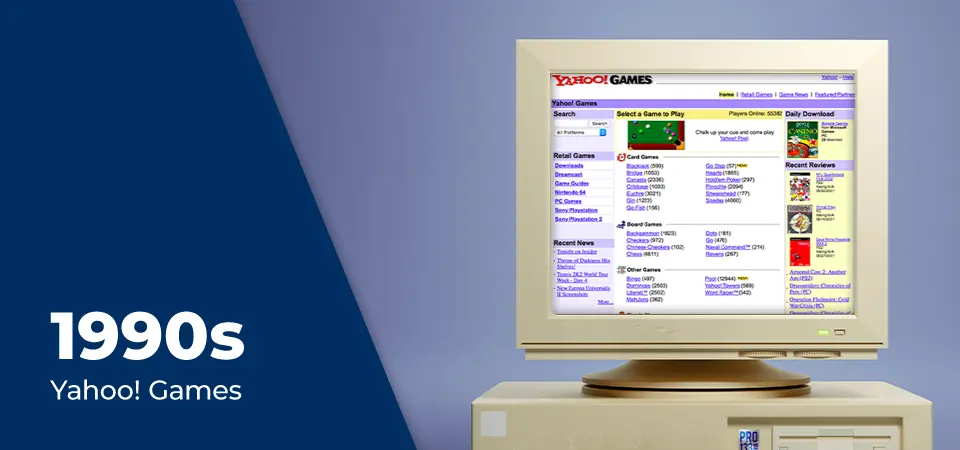
Yahoo! Games
Yahoo! Games, a section of the Yahoo! website, launched in 1998 offering a wide range of games in various categories such as card games, board games, word games, sports games and more, all in the form of Java applets and Flash games. Don’t let the minimalist design of this website fool you: the games here were both surprisingly addictive and influential, laying the foundation for popular games like Candy Crush.
The site offered a wide variety of games, all free to play with the exception of persistent pop-up ads and limitations. Particularly invested games could pay for "All Star" status to access additional privileges.
After a respectable 18 years in operation, the site shut down in 2016. The influence this site had on the industry as a whole, however, is unmatched.
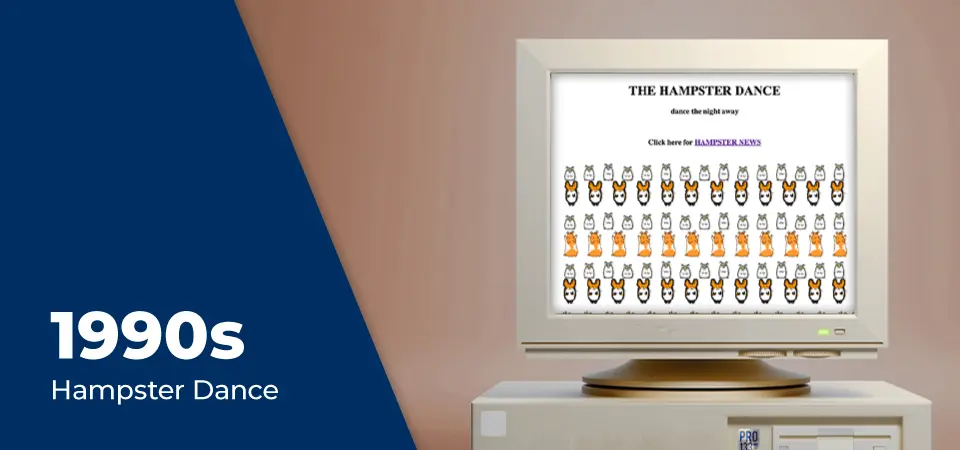
Hampster Dance
Hampster Dance is a perfect representation of early internet culture. The simple yet catchy meme was one of the first on the web, and featured animated GIFs of hamsters along with an auto-playing song. The site was first published in 1998 but took a year to become a viral sensation in 1999.
The website featured a variety of hamster GIFs, a visitor counter, a guestbook, and looped background music, all characteristic of '90s web design, making it an iconic relic of the era. For those who lived through this early era of the internet, Hampster Dance evokes a healthy dose of nostalgia.
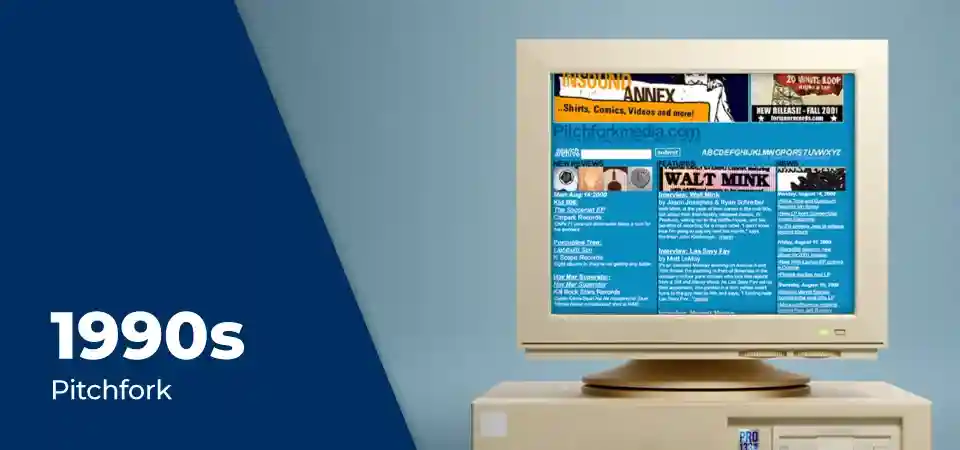
Pitchfork
The online music magazine, Pitchfork, was launched in 1995 and quickly established itself as a leading source for music journalism with its weekly features, frequent record reviews, and a curated selection of indie music news.
Akin to many sites of this year, Pitchfork's early featured a newspaper-encyclopedia style navigation, with columns separating different music and a minimalist colour scheme. The site has since gone through multiple designers but still continues to publish the editorial content it was made to deliver.
The 2000s: Google, the Underdog
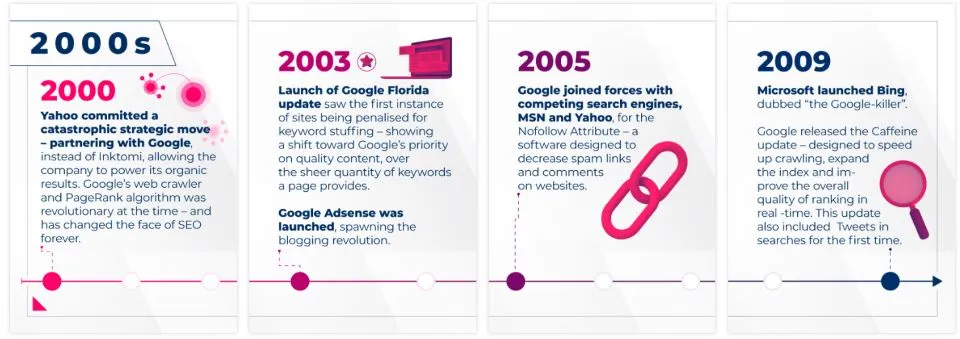
Today, Google and the internet are used interchangeably, the company has even seeped its way into everyday language, with the term ‘Google’ being added as a verb in the Oxford Dictionary in June 2006. But it wasn’t always this way. In fact, in the early 2000s, Google’s brand as a search engine was relatively unknown.
To understand how Google came to take over the web, we need to look at the failings of its competitors…
At the start of the millennium, Yahoo! committed a catastrophic strategic move: partnering with Google, instead of Inktomi, allowing the company to power its organic results.
This meant that every Yahoo! result was concluded with the phrase ‘Powered by Google’ cementing the brand as a leading name in search engine technology. A slight oversight by the PR team at Yahoo!, don’t you think?
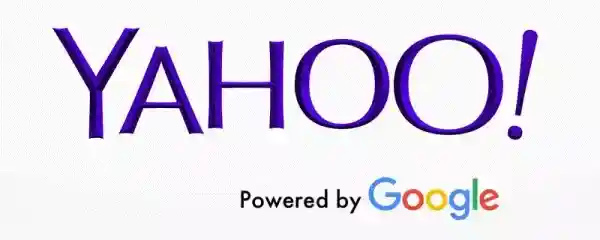
Google’s web crawler and PageRank algorithm was revolutionary at the time—and has changed the face of SEO forever.
Before then, search engines ranked sites based on their on-page content, site structure, as well as domain names, and ability to get listed on directories.
On the other hand, the technology of Google ranked sites on both on-page and off-page factors such as the quantity, and most importantly, quality of external links pointing to a website.
In 2001, Brin and Page appeared on the Charlie Rose Chat show to talk about the way Google works. Brin replied by emphasising how Google, at the time, was just a search engine that looked at “the web as a whole, not just which words occur on each page.”
This short but sweet statement summarised the initial intentions of Google: taking into consideration how the web interacts as a whole, not just the copy of pages themselves. Soon after, updates to the algorithm began to examine words on the page too—and the rest was history.
2003: How did Google’s Algorithm Change?
The release of Google’s “Florida” update to the algorithm in November 2003 was another turning point for the search engine.
This update saw the first instance of sites being penalised for the common tactic of keyword stuffing (the act of doing initial keyword research, finding a phrase that suited and inserting it into the content so much that it becomes unreadable) showing a shift toward Google’s priority on quality content, over the sheer quantity of keywords a page provides.

In 2003, Google also launched Adsense following the acquisition of Blogger.com. This new initiative helped make targeted ads on publishers' sites, creating a new model of simple, monetised online publishing—otherwise known as the blogging revolution.
2005: A Landmark Year for SEO
2005 was a huge year for search engine technology.
In January, Google joined forces with competing search engines, MSN and Yahoo!, for the Nofollow Attribute: a software designed to decrease spam links and comments on websites.
In June of that year, Google introduced its personalised search feature, meaning search results could be tailored to an individual’s search and browsing history, further increasing the accuracy and relevancy of SEO.
In the following November, Google Analytics was launched—an unmatched tool still used by SEO experts in the industry today.
2009: The Emergence of Bing: the ‘Google-Killer’?
This year saw the debut of Bing: a search engine pioneered by Microsoft, aggressively marketed as the better Google alternative, with supposedly better search results.
However, despite the claims, Bing was no ‘Google-Killer’ with the Search Engine Journal highlighting that there was no noticeable difference between the two engines, other than Bing giving priority to keywords in URLs, as well as favouring capitalised words and pages from large sites.

Google’s Caffeine algorithm update was released in 2010, after requesting the public to help test the “next-generation infrastructure” designed to speed up crawling, expand the index and improve the overall quality of ranking in real-time.
The update saw the Google search include breaking news and Tweets—a hint of how the emergence of social media was changing SEO.
Nostalgic Websites of the 2000s:
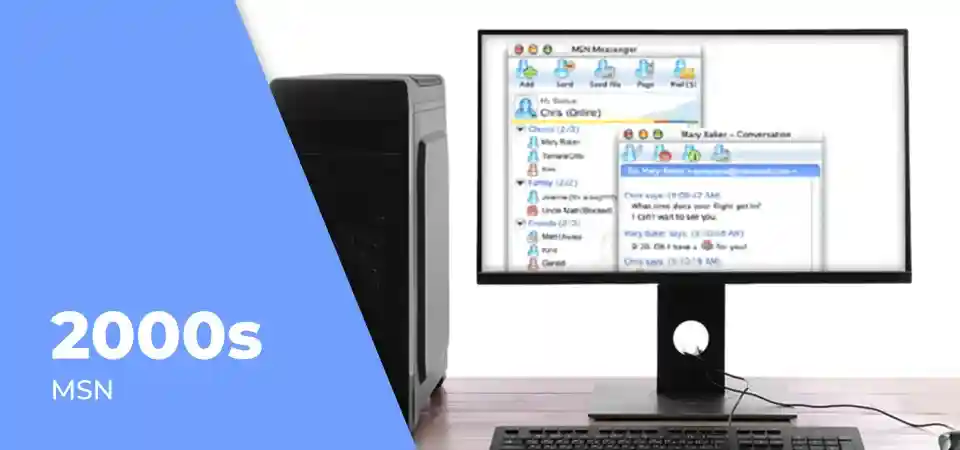
MSN Messenger
The MSN Messenger Service, which was later known as Windows Live Messenger, was initially released on July 22, 1999. At the time of its release, it was marketed under the MSN brand. In 2005, the brand underwent a rebranding and it was subsequently known as Windows Live Messenger. Despite the official name change, the original brand name, MSN Messenger Service, remained in widespread use among its users: an iconic piece of software for its era.
You might remember MSN for the constant nudges, logging in and out to get attention on your crush, or the mind-numbing amount of emojis provided by the service. No matter the memory, it’s safe to say that MSN is one of the most nostalgic sites of the 2000s.
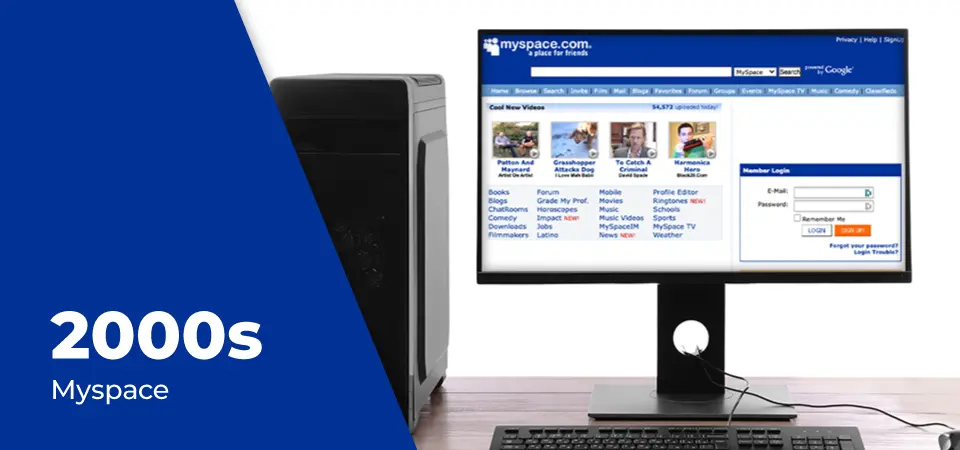
Myspace
Myspace launched in 2003 as a platform for teens and young adults to build online identities and connect with friends online. It soon became one of the most recognisable social media platforms on the web in that era. But, despite its use as a social networking tool, it's worth noting that MySpace also had a strong emphasis on music, offering a unique blend of social networking and music discovery before Spotify became popular. We can thank Myspace for launching the careers of major artists of the mid-2000s, like My Chemical Romance and Lilly Allen.
Unfortunately, Facebook's rapid rise to success happened alongside Myspace's decline, with Facebook becoming the leading social networking platform in 2008. By 2010, Myspace had reached its lowest point in terms of membership and saw a drastic decrease in monthly visitors within a year. Despite this, Myspace still had 57 million users by the end of 2010.
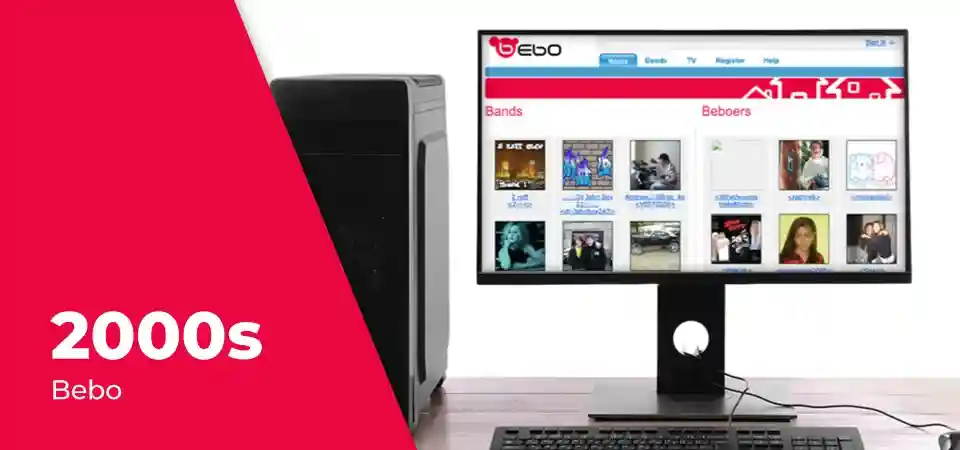
Bebo
Although Bebo was not a widely popular platform in the United States, it saw significant success in countries such as New Zealand, Australia, and the United Kingdom, where it was the most widely used social network in 2007.
However, in 2008, as Bebo was reaching its peak with 80 million active users, AOL acquired the platform for a significant sum of $850 million. Unfortunately, this acquisition came at a time when Facebook was rapidly growing in popularity, and Bebo struggled to compete. Since then, Bebo has experienced a decline in popularity, with the platform filing for bankruptcy in 2013. Multiple efforts have been made to relaunch the site back to its former glory, yet none have been successful.
The 2010s: The Great Google Takeover
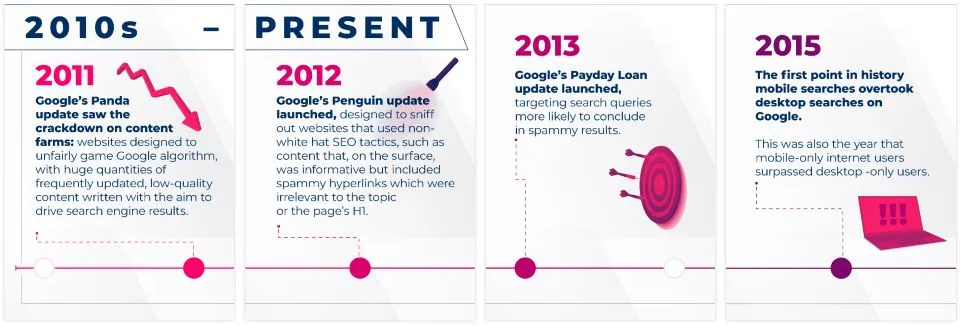
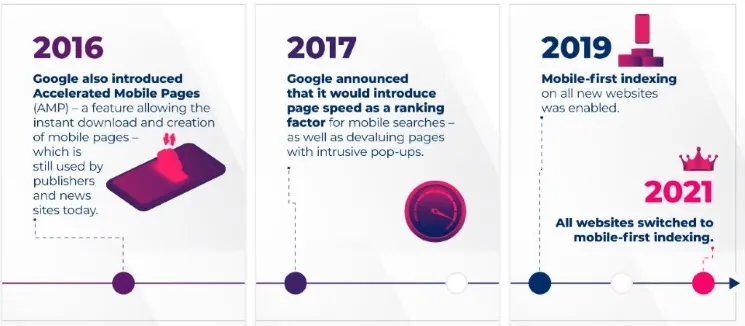
If the '90s were SEO’s infancy, and the 2000s were its teenagehood, the 2010s saw it become fully matured. Google had now cemented itself firmly as the most common search engine in the field, and the world was starting to wise up to the benefits of good page and intent optimisation.
Following Google’s 2010 Caffeine update, “social signals” were added to Bing and Google in December 2010: displaying written Facebook posts from your own network that matched your query.
2011, 2012 & 2013: A Crackdown on Spam
These years saw two updates to Google algorithms aimed to fight against disinformation and consequently changing SEO: Panda, released in 2011, and Penguin, released in 2012.
Panda, which was first rolled out in February 2011, saw the crackdown on content farms: websites designed to unfairly game the Google algorithm, with huge quantities of frequently updated, low-quality content written with the aim to drive search engine results.
These content farms had a tendency to include a large ratio of ads-to-content, with the purpose of making more money—another element damaging Google’s reputation as a reliable search engine that this update was keen to stop.
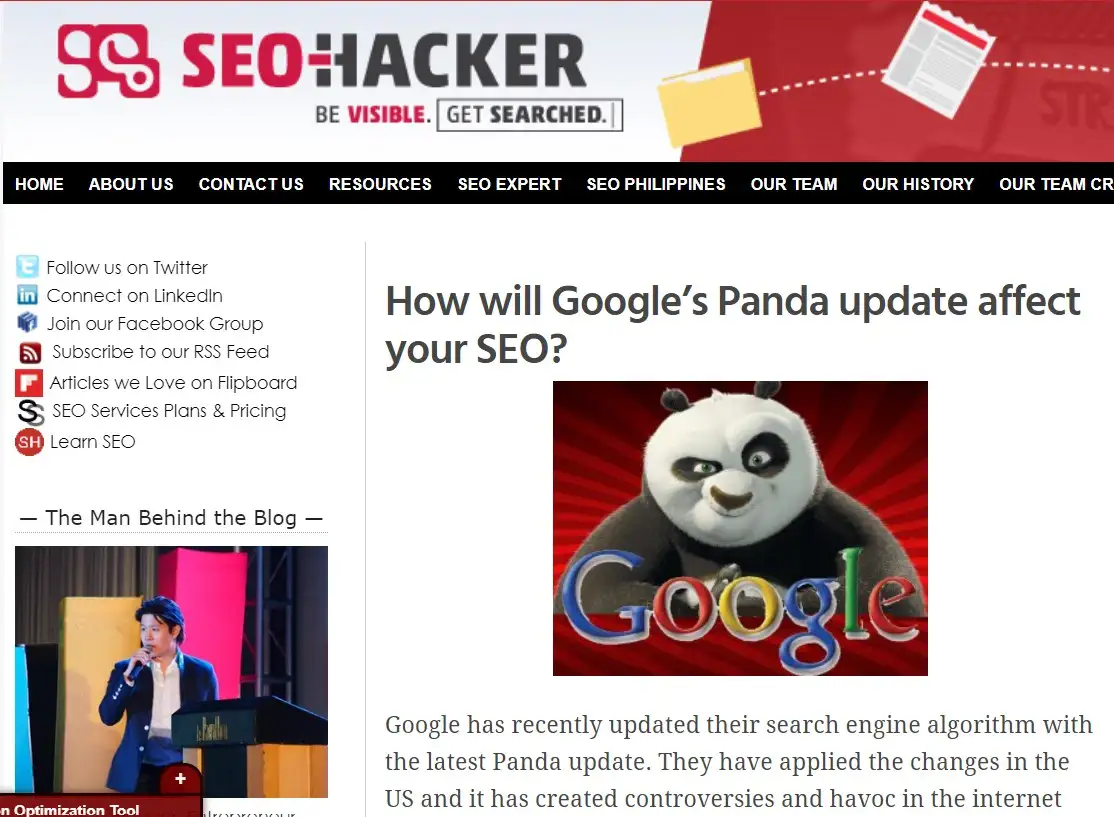
Penguin, which was rolled out in April 2012, was an extension of Google’s mission of rewarding high-quality sites and decreasing the power of content farms in its index.
This update was designed to sniff out websites that used non-white hat SEO tactics, such as content that, on the surface, was informative but included spammy hyperlinks which were irrelevant to the topic or the page’s H1.
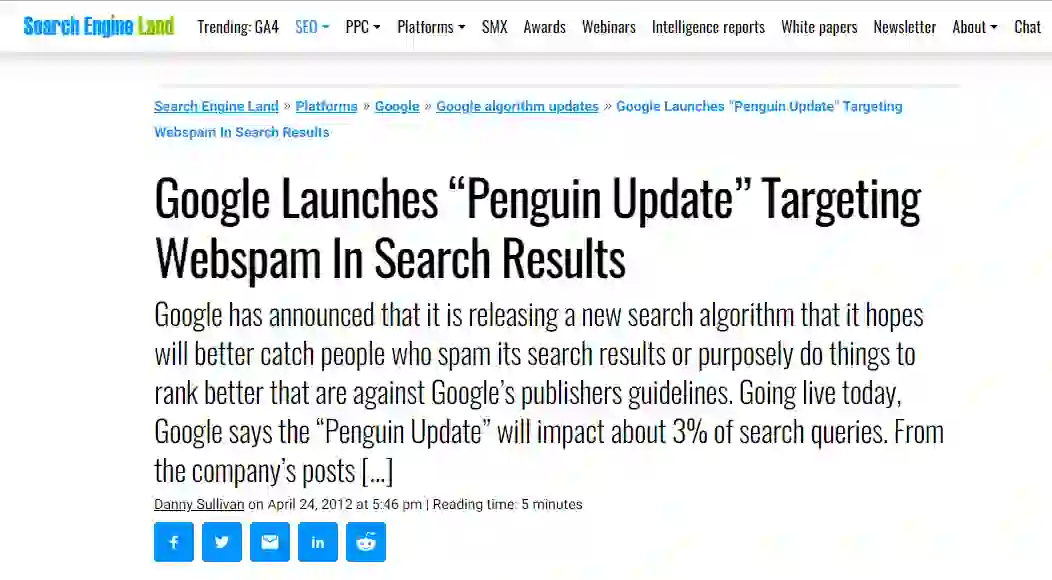
These days you will find fewer websites relying on such manipulative strategies, as the biggest and best businesses invest in higher quality strategies offered by creative digital PR agencies and SEO agencies.
Another advancement to Google in this era worth mentioning was the Payday Loan algorithm update, which honed in on search queries more likely to conclude in spammy results. These searches included typical searches that may have directed the user to low-quality content sites, like payday loans (hence the name).
This update, released in 2013, adjusted the engine’s mechanism to ensure that spam-filled content is kept low in its ranking.
2015: The Rise of the Mobile Search

2015 saw the first point in history where mobile searches overtook desktop searches on Google—a moment that embodied the rapid domination of mobile devices in the industry. This was also the year that mobile-only internet users surpassed desktop-only users, according to a report by ComScore.
In response to this, Google launched an update in 2015 which gave mobile users relevant results tailored to mobile-friendly web pages.
In 2016, Google also introduced Accelerated Mobile Pages (AMP)—a feature allowing the instant download and creation of mobile pages—which is still used by publishers and news sites today.
The following years saw a slew of updates from Google’s algorithm to optimise mobile-friendly searches.
In 2017, Google announced that it would introduce page speed as a ranking factor for mobile searches, while also devaluing pages with intrusive pop-ups. In 2019, mobile-first indexing on all new websites was enabled. In March 2021, all websites switched to mobile-first indexing.
While the numbers show a clear progression of how mobile technology is changing SEO, it’s important to note that there are key differences in behaviour for desktop and mobile users: conversion rates remain much lower on mobile devices, something that SEO companies have to keep in mind when creating content.
What Does the Future of SEO Look Like?
So, what next for SEO? While pinning down exactly what the future holds is always a difficult task, especially with tech, there are some predictions we can draw upon–many of which can help us predict how SEO will evolve in the future. “Google has gotten better over the years at filtering unqualified, or overly biased opinions and authors. Definitely, in the future, that will only become more important,” says our director of SEO, Oliver Sissons.
Moving forward, Google is most likely to focus on its E-E-A-T model—placing importance on web content that shows experience, expertise, authority, and trust.
“Google only wants to show people that are qualified to talk about the keywords the searcher is looking for. They want to filter out sensationalist arguments that might damage their searches,” Oliver adds.
New technology is also going to drastically change the SEO landscape in the coming years. With the rise of smart speakers and the advancement of phones, new ways of searching—like voice search SEO—have already hugely changed SEO over the last few years.
“That is something that is certain to grow as people become more comfortable [using voice search],” Oliver says. “AI and machine learning are getting better at interpreting voice commands too, which will mean better results and more accurate results.”

SEO and Artificial Intelligence: Friend or Foe?
AI-assisted content is another aspect that SEO marketers should consider, however, Oliver notes that “there is a debate around how effective that will be.” In the face of rising accessible AI technology, like ChatGPT, Reboot conducted an experiment to find if Google would rank AI-generated content any better or worse than content created by a human. The result? Google clearly ranked AI-generated content less strongly (on average) compared to human-generated content.
A lot of AI content tools use Google’s data; if they made that dataset, odds are they will be able to identify whether someone is using it. The question is: how creative can people get with AI to where they can add their own authority or expertise, and use AI content to scale it up?
So, despite AI content ranking less strongly than content generated by humans, is AI bad for SEO? Not necessarily.
A lot of Google’s search results are actually generated by their AI algorithms, so chances are that Google isn't looking to blanket ban AI. It depends on how it’s used. If everyone is going to use AI, you’ll have to use it more creatively and comprehensively to see the same results that you might see if you get an expert to write the piece of content.
Search engine optimisation has a rich and complex history: from its humble beginnings in the 1990s to an industry projected to be worth $80 billion in 2022. We’ve only scratched the surface of SEO – how it’s become what it is today, and what we may expect to see from search engines in the future. Having sound knowledge of SEO’s history allows marketers to make more informed decisions about their practice and, ultimately, help get your product or service ranking at the top.
If you want to see what the future of SEO looks like for you and your brand, get in touch with Reboot today.

